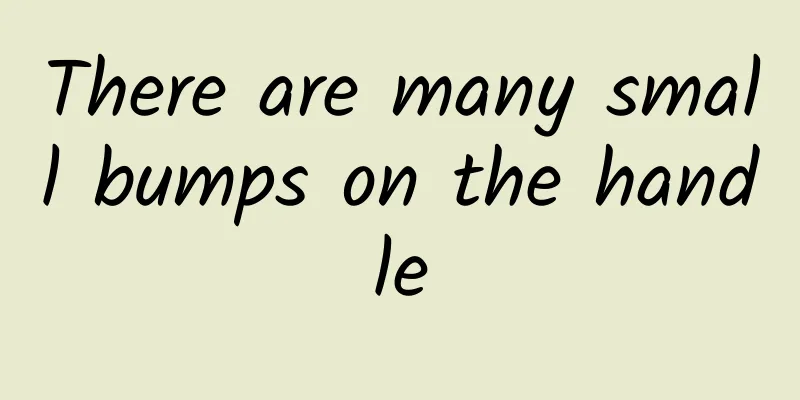What is the use of testicles?

|
Everyone is familiar with the testicles, which are part of the male reproductive organs. The main function of the testicles is to produce sperm and secrete male hormones. In life, male friends must pay attention to the protection of the testicles to avoid a series of injuries and diseases of the testicles. Testicular diseases may not only affect themselves, but also affect the happiness of the family. So let's take a look at the role of the testicles! 1. Testicles The testicles are located in the scrotum, one on each side, and the left side is generally 1 cm lower than the right side. The testicles are slightly flattened elliptical, with a smooth surface, divided into inner and outer sides, front and back edges, and upper and lower ends. The front edge is free; the back edge has blood vessels, nerves and lymphatic vessels entering and exiting, and is in contact with the epididymis and the testicular part of the vas deferens. The upper end and the back edge are attached to the epididymis head, and the lower end is free. The outer side is convex, and the inner side is flat. The testicles grow rapidly with sexual maturity, and shrink and become smaller with the decline of sexual function in old age. 2. Structural characteristics The surface of the testis is covered with a thick fibrous membrane called the tunica albuginea. Along the posterior edge of the testis, the tunica albuginea thickens and protrudes into the testis to form the septum testis. From the septum testis, many connective tissue septa extend and divide the testicular substance into many testicular lobules. The testicular lobule contains the convoluted seminiferous tubules, the epithelium of which can produce sperm. The connective tissue between the tubules contains interstitial cells that secrete male hormones. The seminiferous tubules combine to form the straight tubules, which enter the testicular septum and interweave to form the rete testis. From the rete testis, 12 to 15 efferent ductules emerge, exiting the upper part of the posterior edge of the testis and entering the epididymis. Testicles are male internal reproductive organs. Normal men have two testicles, one on the left and one on the right side of the scrotum. Testicles are oval and grayish white. Adult testicles are 3.5-6 cm long, 2.3-4 cm wide, 2-2.8 cm thick, and each testicle weighs 16-67 grams. Generally, the left testicle is about 0.5 cm lower than the right testicle. Some people have one testicle that is larger than the other, or one that is higher than the other. If the difference is not too big, it is normal. There are a large number of curved seminiferous tubules in the testicles, which contain interstitial cells. The seminiferous tubules are where sperms are produced. The number of sperms produced in a person's lifetime is astonishing. One ejaculation of 3-4 ml contains 300-400 million sperms, and as few as 100-200 million. The number of sperms produced in a lifetime can reach more than 1 trillion. The production of sperms is easily affected by many factors such as temperature. If the temperature around the testicles is too high or affected by chemical toxins, sperm production will be hindered. Interstitial cells produce androgens, which are closely related to male secondary sexual characteristics and physiological functions. 3. Sperm production The internal structure of the testis is wrapped by a layer of tough tissue on the outside, called the white membrane, which protects the testis. The white membrane thickens and extends inward, dividing the testis into many small chambers, which are called testicular septa and testicular lobules. Normal men generally have 200 to 300 lobules, which are filled with testicular parenchyma, where sperm is produced, called seminiferous tubules. If a small piece of testicular parenchyma is cut and placed under a microscope for observation, it can be seen that the seminiferous tubules are thin tubes. In adults, the diameter of each seminiferous tubule is 150-250 microns, and the length of each is 30-70 centimeters, with the longest reaching 150 centimeters. There are about 300-1000 seminiferous tubules in a testis, with a total length of 200-300 meters. Obviously, the base for testicular sperm production is quite large. The seminiferous tubules in each testicular lobule merge into 2-3 straight seminiferous tubules to form the rete testis, which then merge into 15-20 testicular efferent ductules that communicate with the epididymis. Sperm enter the epididymis through this channel to mature. |
<<: Removal of human testicles
>>: What to do if your testicles burst?
Recommend
Does a man with more chest hair mean he is more capable?
Men with more chest hair have stronger sexual abi...
Is it normal for the penis to always be erect?
When our body is stimulated or when we have sexua...
How to test for HIV? Just follow these three steps at home
AIDS is a kind of sexually transmitted disease, b...
The earliest symptoms of prostate hyperplasia
The prevalence of prostate hyperplasia is very hi...
How to train chest muscles with bare hands, principles of nutritional supplementation for chest muscle training
For men, training chest muscles is the most commo...
What to do if the penis cannot get hard
The pressure of modern society is getting greater...
Boys' voice changes
Many boys will experience many changes in their b...
How many days after circumcision is it best to remove the stitches?
Many men have experienced the trouble of having t...
What causes pain on the left side of a man's abdomen?
Male friends are generally careless. When encount...
Itching of the skin outside the testicles
Itching of the outer part of the testicle is also...
What causes penis base flaccidity?
Some men always feel powerless during sex. The ba...
Men should not eat too much honey
Pure honey is a natural nourishing food that is b...
How many days does it take for sperm to mature?
As people pay more attention to health, many peop...
What is epididymal pain?
Epididymitis pain is one of the symptoms of epidi...
Sperm motility grade A
If a man suspects that he has fertility problems,...









